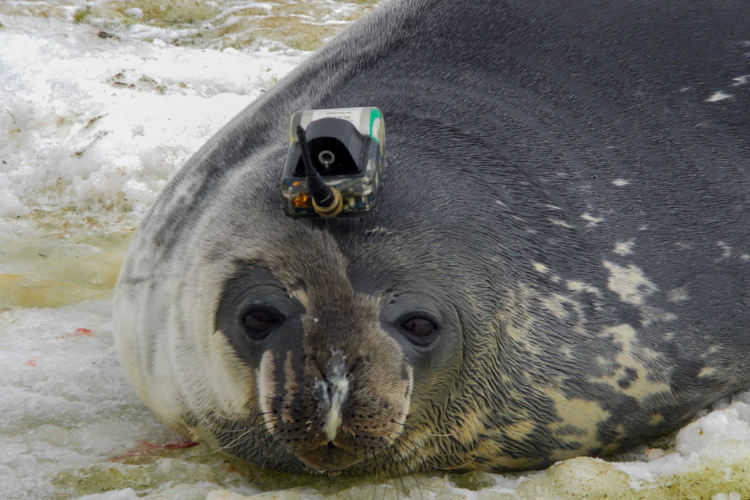Antarctic expedition

Researchers from the Sea Mammal Research Unit (SMRU) at the University of St Andrews will set sail today (Thursday 6 January) on the third and final ship-based research expedition to Thwaites Glacier in West Antarctica as part of the International Thwaites Glacier Collaboration (ITGC).
The 62-day scientific cruise on board the US icebreaker Nathaniel B Palmer is part of a five-year project to understand how quickly the glacier, which is the size of the UK, could melt. If Thwaites Glacier were to melt completely, sea levels would rise by 65cm.
The ship will spend seven weeks in front of Thwaites Glacier conducting a range of scientific experiments and deploying a range of instruments.
Dr Lars Boehme, Dr Guilherme Bortolotto De Oliveira and PhD student Hannah Wyles from the School of Biology’s Sea Mammal Research Unit (SMRU) will oversee a project to tag seals to gain an understanding of the ocean’s temperature.
The St Andrews scientists will work within the TARSAN (Thwaites-Amundsen Regional Survey and Network) project to measure the oceanic heat in front of the glacier and its potential to increase the glacier’s melting rate.
Seal ecologist Dr Boehme is overseeing the tagging of 23 Southern Elephant and Weddell seals with tiny sensors, which are temporarily glued to the animals’ fur and fall off during moulting. These seals live near the ice front of the glacier so are ideally positioned to provide information about these areas, which are hard for researchers to access.
These tags will allow measurement of the ocean’s heat, which can highly affect the melting rate of the floating part of the glacier. They are designed and built at SMRU in St Andrews and have been used in various marine mammal tracking studies around the globe.
Some of these instruments also record the abundance of phytoplankton in the water to understand the changes in the ecosystem in relation to the melting glaciers. This is part of the ARTEMIS (Accelerating Thwaites Ecosystem Impacts for the Southern Ocean) project which looks at the most productive polynya in coastal Antarctica: its vibrant green waters are even visible from space.
The surrounding melting glaciers can create a dramatic change in these coastal polynya ecosystems and ARTEMIS will combine a range of measurements to better understand the changes this polynya experiences.
The research expedition is part of the International Thwaites Glacier Collaboration (ITGC), funded by the UK Natural Environment Research Council and the US National Science Foundation. The ITGC is the largest joint project undertaken by the UK and US in Antarctica for more than 70 years – since the conclusion of a mapping project on the Antarctic Peninsula in the late 1940s. This joint £20m research programme started this season and is one of the most detailed and extensive examinations of a massive Antarctic glacier ever undertaken.
Antarctica’s glaciers contribute to sea-level rise when more ice is lost to the ocean than is replaced by snow. To fully understand the causes of changes in ice flow requires research on the ice itself, the nearby ocean, and the Antarctic climate in the region.
Thwaites Glacier is one of the largest in Antarctica with an area similar in size to the UK, meeting the ocean with a cliff face spanning 120km. Its flow rate has increased from 3km per year to 4km per year since 2006 and dumps 126 GigaTonnes of ice into the ocean every year.
Issued by the University of St Andrews Communications Office.